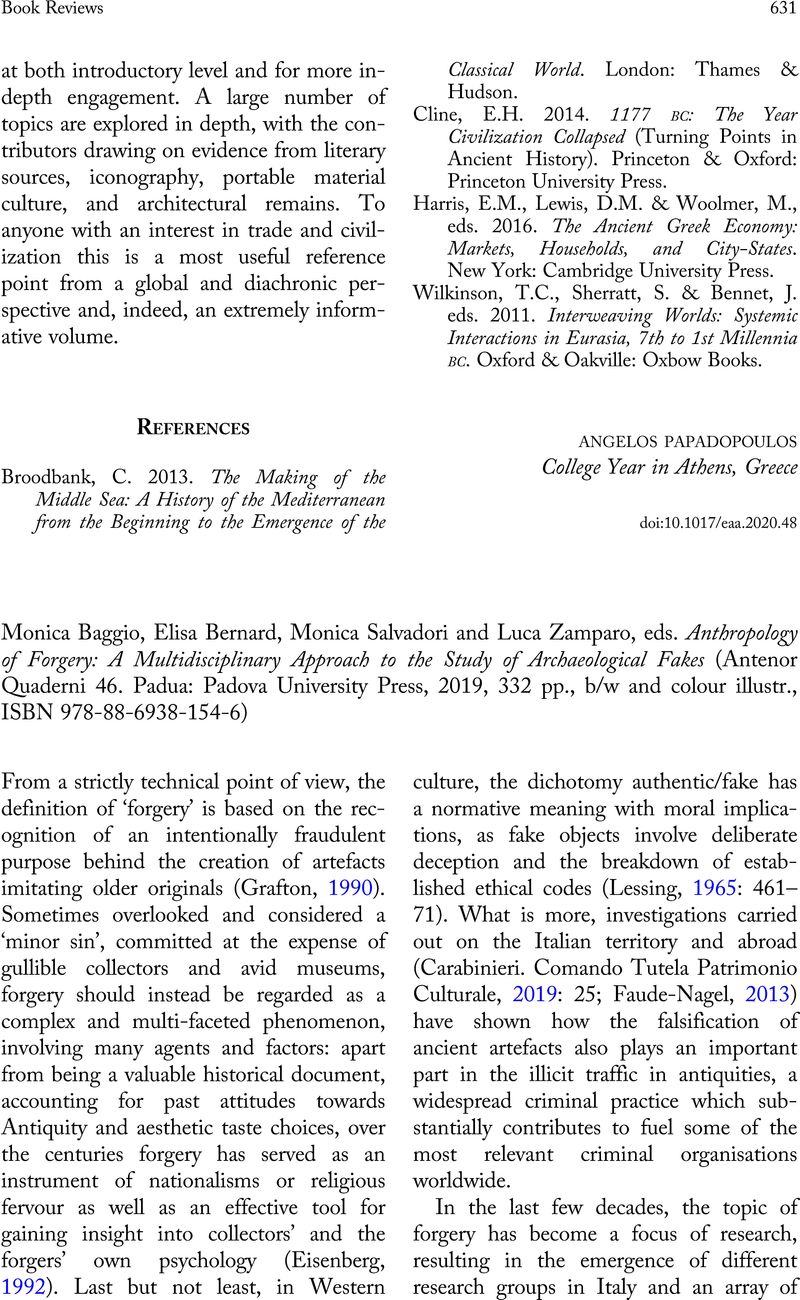Carabinieri. Comando tutela patrimonio artistico, Ministero per i beni e le attività culturali & Università degli Studi Roma Tre 2018.
L'arte non vera non può essere arte: Atti del ciclo di conferenze promosse dal Comando Carabinieri TPC, in collaborazione con il Consiglio Nazionale
Anticontraffazione (CNAC-MiSE), il Ministero per i beni e le attività culturali e l'Università degli Studi Roma Tre, ottobre-dicembre 2017.
Roma:
Edizioni Efesto.
Google Scholar 